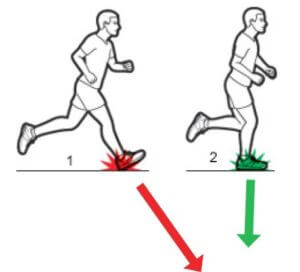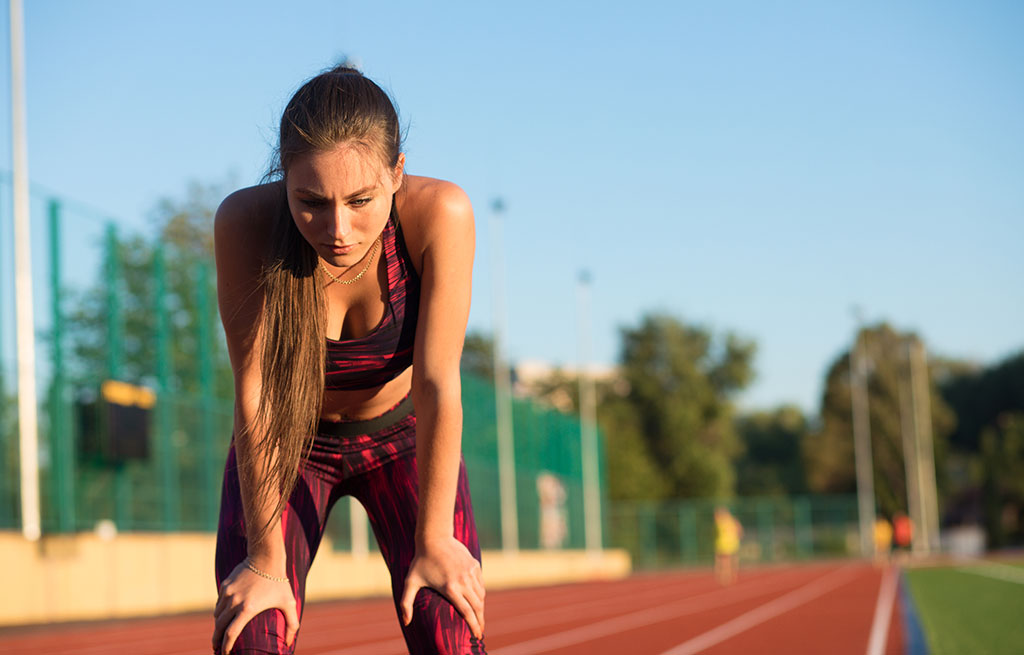“Overstriding” means that when you run, you land with your foot in front of your body.
In the image below- the runner on the left is demonstrating an overstriding running gait. You’ll notice that the overstriding running gait is associated with a heel strike landing.

How does overstriding cause injuries in runners?
The impact and vibrational stress is very high when you overstride and often affect the knees and hips in particular. Conditions like shin splints, IT Band syndrome, meniscus injuries, and several others are typical in overstriders. If that doesn’t make you want to have a professional evaluate your running form, overstriding is a less efficient way to run; if high performance is your goal, overstriding may be what’s been slowing you down!
In the image above, the runner on the right demonstrates a preferred landing pattern for both injury prevention and running performance. Landing midfoot or forefoot with the foot under the body has been demonstrated to reduce joint and tendon stress in runners and few incidences of injury as well.
Overstriding is also a less efficient way to run; if high performance is your goal, overstriding may be what’s been slowing you down!

The preferred landing pattern for both injury prevention and running performance is landing midfoot or forefoot with the foot under the body. This running approach reduces joint and tendon stress in runners and few incidences of injury as well.
Runners are surprised when they discover that they are an overstrider. “Oh wow, I never knew I ran that way!”
Not sure if you’re an overstrider or not? Do injuries stop you from your best performance?
It’s worth getting your running form evaluated before your race season starts in 2022.

The RunDNA is a 3D running gait analysis device that we use at Next Level to evaluate our active clients. Whether you’re injured or not, RunDNA pinpoints the weak spots in your running form, body alignment, so that you can get back your favorite sports even better. More importantly, the RunDNA shows you how to correct your running form.